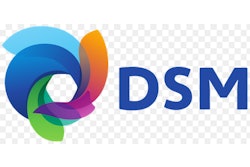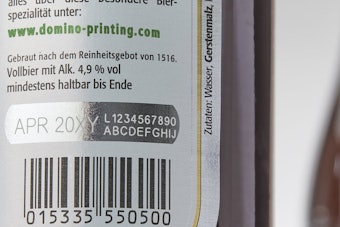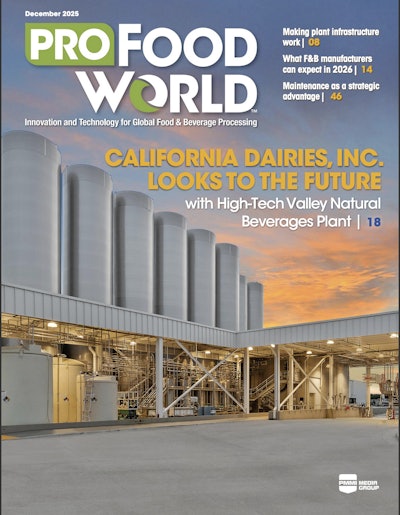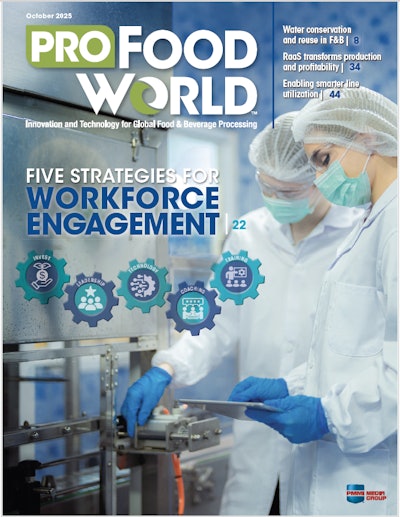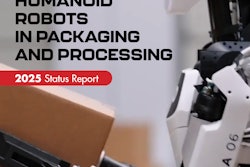Artificial Intelligence (AI) is changing the way we do business by providing marketers with the tools to generate new ideas, speed up content creation, and automate repetitive tasks freeing up valuable time. In a 2021 PMMI survey, nearly 75% of responding companies had marketing teams of five or fewer employees, making gains in efficiency highly valuable. PMMI member Stacy Johnson, vice president of business development at Hoosier Feeder Company, shares, “I use ChatGPT every single day. As a very small marketing team, I use it as an additional member who can proofread, recommend improvements, help with research, and provide ideas.”
As generative AI tools continue to evolve, many marketers are eager to integrate AI into their daily operations, but may struggle to identify the right use cases and prompts to get started. My advice is to start small and begin experimenting now, as AI will take time to learn and master.
Allison Wagner, business strategy manager at Morrison Container Handling Solutions, agrees. “Its power is only going to grow, so start using it now to get it into your day-to-day routine,” she says. However, she also cautions, “it’s important to know that there are still some limits to the knowledge of AI, especially in the niche packaging industry.”
To help you get started with incorporating AI into your marketing operations, below are seven strategies complete with use cases and example prompts.
Brainstorm
Gone are the days when brainstorming relied solely on a room full of creative minds. AI-powered tools can now help marketers generate an extensive list of topics, supporting points, or unique angles to approach a subject. By simply providing a few keywords or phrases, AI can generate numerous suggestions, saving time and effort while maintaining a constant flow of fresh ideas.
The beauty of AI is its ability to deliver personalized results based on the input provided. If you're looking for general ideas, keep your input minimal. However, to receive more detailed and targeted suggestions, be sure to include background information, context, or specific problem areas you'd like to address. This will enable AI to analyze and understand your requirements better, leading to more relevant and actionable ideas.
Whether you're working on blog articles, videos, or social media posts, AI-generated ideas can serve as a solid foundation for your content strategy. By embracing AI as a brainstorm buddy, marketers can ensure that they have a constant supply of engaging and diverse content ideas, helping them stay ahead of the competition.
Try this AI prompt: Brainstorm 10 content ideas related to [topic] that [your audience] would find interesting and beneficial.
Outline
Brainstorming can be a great help when you’re staring at a blank page, but if instead you have a page full of notes, another use of AI is to help organize content into a logical, structured format. It can also fill in the gaps where additional context would be helpful to round out the final piece.
Leveraging AI for creating outlines can save marketers time by analyzing the provided information and identifying the most relevant points to be included in the content. AI-powered tools can intelligently group similar ideas together, ensuring a coherent flow throughout the piece, and eliminating the need for manual sorting and categorization. This process not only saves time but also helps to maintain consistency and avoid redundancy in the content.
To get started, feed the AI tool your key points making sure to highlight what is most important along with any other parameters such as number of subtopics to include, audience background, and tone of voice. From the results, you can further utilize AI to expand on each subtopic. Additionally, AI tools can also suggest relevant research or data points to support your arguments and enhance the credibility of your content. This ensures that your outline is not only well-structured but also comprehensive and informative.
Beyond content such as blog posts and articles, the outline format can also be used to help create presentation slides for an internal or external audience. By automating the outline creation process, marketers can focus more on the strategic aspects of their content and presentations, leading to greater impact and better results.
Try this AI prompt: Create a blog post outline about [topic] with five-to-seven subtopics including [key points].
Summarize and transcribe
An effective way to leverage AI in marketing is by utilizing it to summarize and transcribe content from various sources, allowing you to expand your knowledge and extract key points efficiently. Many AI tools enable you to input a URL containing the source content and receive a summarized version. To obtain a tailored summary, provide context about yourself or how you plan to use the information.
For audio or video content, first transcribe it using tools like Descript or Otter. Afterward, create a summary of the transcribed content or extract notable quotes to share on written platforms, such as blogs or social media.
AI can also be used to summarize internal content, ranging from lengthy emails to presentation slides. However, be cautious when sharing proprietary or confidential company information. Opt for a paid subscription with robust data protection controls, and consult with your IT department when unsure about using a particular AI tool.
Try this AI prompt: Summarize the article [URL] in 500 words or less from the perspective of [role].
Rewrite
Rewriting existing content is a great way to enhance clarity and form concise messages using AI. Whether it's short headlines or long-form content, AI can help rewrite content to make it more compelling and engaging. By outlining clear instructions on the desired tone of voice, SEO keywords, or content length, the AI can generate high-quality content that resonates with the target audience.
One effective approach is to provide the AI with the original piece of content and clear instructions on the desired changes. For instance, if the content is too lengthy or has bloated sentences, the AI can suggest ways to compress the message, making it more crisp and impactful. Alternatively, if the content is too dry or lacks the desired tone of voice, the AI can suggest ways to add color and flair to the copy. AI-generated content is also useful for reviewing before and after results to help learn to write more effectively from the get-go.
Try this AI prompt: [Paste your content] Rewrite the content above to be more concise and engaging.
Expand
Using AI to expand content can be a convenient solution when you have an initial idea but lack the time, knowledge, or even motivation to fully develop it. This approach can be especially helpful for busy marketers who are juggling multiple tasks and need to create quality content quickly.
By inputting a few sentences into an AI tool, marketers can receive a substantial amount of new material that can be used to flesh out their content. This can range from lengthening blog posts to creating more detailed product descriptions, and in turn, elevating the overall content quality.
Leveraging AI-powered tools to develop content can not only save time and resources but also stimulate creativity by generating new ideas and perspectives that you might not have considered. This can lead to more diverse and dynamic content that captures the attention of your audience and keeps them engaged.
Additionally, AI-generated content can be used as a foundation for further research and development. For instance, if you have a basic concept for a blog post or article, AI can help you expand on that idea, providing you with a more comprehensive outline or draft that you can then refine and polish.
Try this AI prompt: [Your starting thought] this is important because
Reformat
Using AI, marketing teams can optimize their content development and distribution strategies by reformatting finalized content for different channels and platforms. For instance, marketers can input a completed blog post URL into the AI system and prompt it to create supporting copy for email newsletters and social media posts. This allows marketers to create related content for different channels quickly, enabling them to focus on the strategic inputs to create the source content and promote it effectively across channels.
One benefit of using AI to reformat content is that it helps optimize productivity and saves time that would otherwise be spent on manual formatting tasks. AI can also analyze the differences in formatting requirements among various channels and adapt the content accordingly, ensuring that the content is optimized for each platform and reaches a larger audience.
Try this AI prompt: Act as a social media manager. Create five LinkedIn post headlines and descriptions for the blog post [URL].
Translate
In the current stage of generative AI development, it is crucial for AI-created content to be validated by humans, especially when it comes to language translations. Using AI as a starting point can help save time in the content creation process. If marketers have knowledgeable translators on their team, they can start with an AI-created draft, which can then be reviewed and validated by humans in less time compared to translating content from scratch. This can lead to an increase in the volume of content that gets translated, ultimately reaching a larger global audience.
One example of how AI can be beneficial for translations is in email marketing. AI-generated translations can help communicate with customers and prospects in their native language, leading to an increase in attention and engagement. Such personalized communication fosters trust, builds relationships, and potentially increases conversion rates.
However, it's important to note that AI translation is not perfect, and mistakes can sometimes occur. Therefore, it's essential to have knowledgeable human resources review the content generated by AI to ensure accuracy and coherence. Additionally, it's important to ensure that the translations are culturally appropriate, as certain language nuances can have different meanings in different cultures.
Try this AI prompt: Provide a clear and accurate translation of the [article, email, or product description] from English to Spanish, while maintaining the tone and intent of the original article.
Conclusion
AI technology presents opportunities for marketers to increase productivity and optimize their content. The seven AI strategies outlined in this article provide a solid starting point for marketers to begin experimenting with and incorporating generative AI into their daily operations.
As AI technology continues to advance, the role of the marketer will evolve to focus more on strategic planning and creative thinking while AI takes care of the more repetitive and time-consuming tasks. Embracing generative AI now will put marketers ahead of the curve, allowing them to adapt to this new landscape and maintain a competitive edge in the constantly evolving world of marketing.
And yes, I utilized AI in the writing of this article to brainstorm, outline, rewrite, and expand content.







